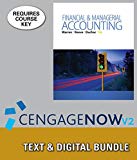
Concept explainers
Activity-based costing for a service company
Wells Fargo insurance Services (WFIS) is an insurance brokerage company that classified insurance products as either “easy” or “difficult.” Easy and difficult products were defined as follows:
Easy: Electronic claims, few inquiries, mature product
Difficult: Paper claims, complex claims to process, many inquiries, a new product with complex options
The company originally allocated processing and service expenses on the basis of revenue. Under this traditional allocation approach, the product profitability report revealed the following:
| Easy Product | Difficult Product | Total | |
| Revenue | $600 | $400 | $1,000 |
| Processing and service expenses | 420 | 280 | 700 |
| Income from operations | $180 | $120 | $ 300 |
| Operating income margin | 30% | 30% | 30% |
WFIS decided to use activity-based costing to allocate the processing and service expenses. The following activity-based costing analysis of the same data illustrates a much different profit picture for the two types of products:
| Easy Product | Difficult Product | Total | |
| Revenue | $600 | $400 | $1,000 |
| Processing and service expenses | 183 | 517 | 700 |
| Income from operations | $417 | $(117) | $ 300 |
| Operating income margin | 70% | (29%) | 30% |
Explain why the activity-based profitability report reveals different information from the traditional sales allocation report.
Source: Dan Patras and Kevin Clancy, “ABC in the Service Industry: Product Line Profitability at Acordia, Inc.” As Easy as ABC Newsletter, issue 12. Spring 1993
Want to see the full answer?
Check out a sample textbook solution
Chapter 26 Solutions
Bundle: Financial & Managerial Accounting, 13th + Working Papers, Volume 1, Chapters 1-15 For Warren/reeve/duchac’s Corporate Financial Accounting, ... 13th + Cengagenow™v2, 2 Terms Access Code
- Financial Accountingarrow_forwardPlease give me true answer this financial accounting questionarrow_forwardRefer to the Hartley Ltd statement of cash flows for the year ended 31 December 2022 and answer the following questions: 1.1 Calculate the following: 1.1.1 Depreciation 1.1.2 Interest paid 1.1.3 Net increase (decrease) in cash 1.1.4 Cash balance as at 31 December 2022. 1.2 Comment on the following: 1.2.1 Cash flows from operating activities of (R390 000) 1.2.2 Cash flows from investing activities of R150 000 1.2.3 Increase in inventory of (R700 000) 1.2.4 Increase in receivables of (R500 000).arrow_forward
 Managerial AccountingAccountingISBN:9781337912020Author:Carl Warren, Ph.d. Cma William B. TaylerPublisher:South-Western College Pub
Managerial AccountingAccountingISBN:9781337912020Author:Carl Warren, Ph.d. Cma William B. TaylerPublisher:South-Western College Pub Managerial Accounting: The Cornerstone of Busines...AccountingISBN:9781337115773Author:Maryanne M. Mowen, Don R. Hansen, Dan L. HeitgerPublisher:Cengage LearningPrinciples of Accounting Volume 2AccountingISBN:9781947172609Author:OpenStaxPublisher:OpenStax College
Managerial Accounting: The Cornerstone of Busines...AccountingISBN:9781337115773Author:Maryanne M. Mowen, Don R. Hansen, Dan L. HeitgerPublisher:Cengage LearningPrinciples of Accounting Volume 2AccountingISBN:9781947172609Author:OpenStaxPublisher:OpenStax College


